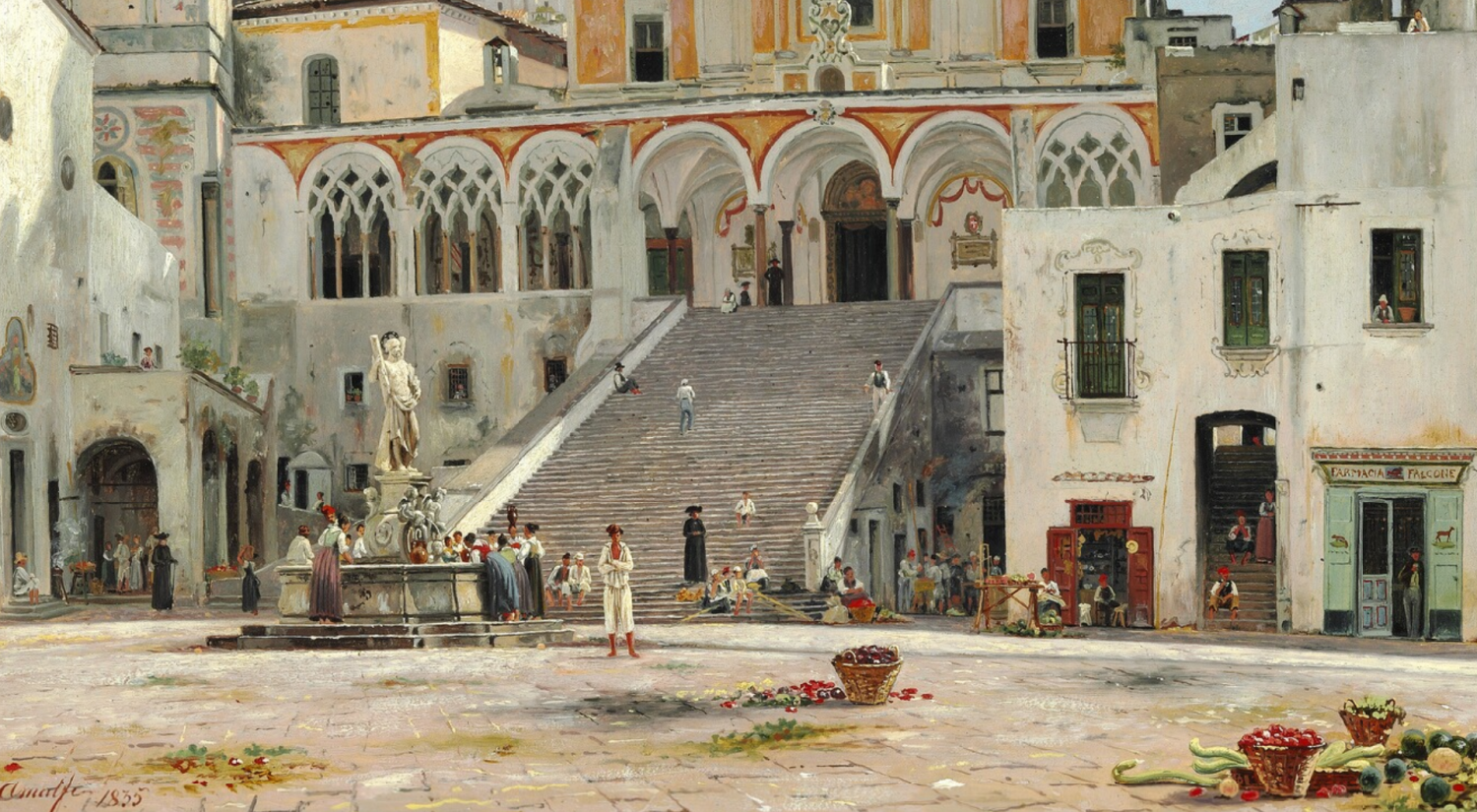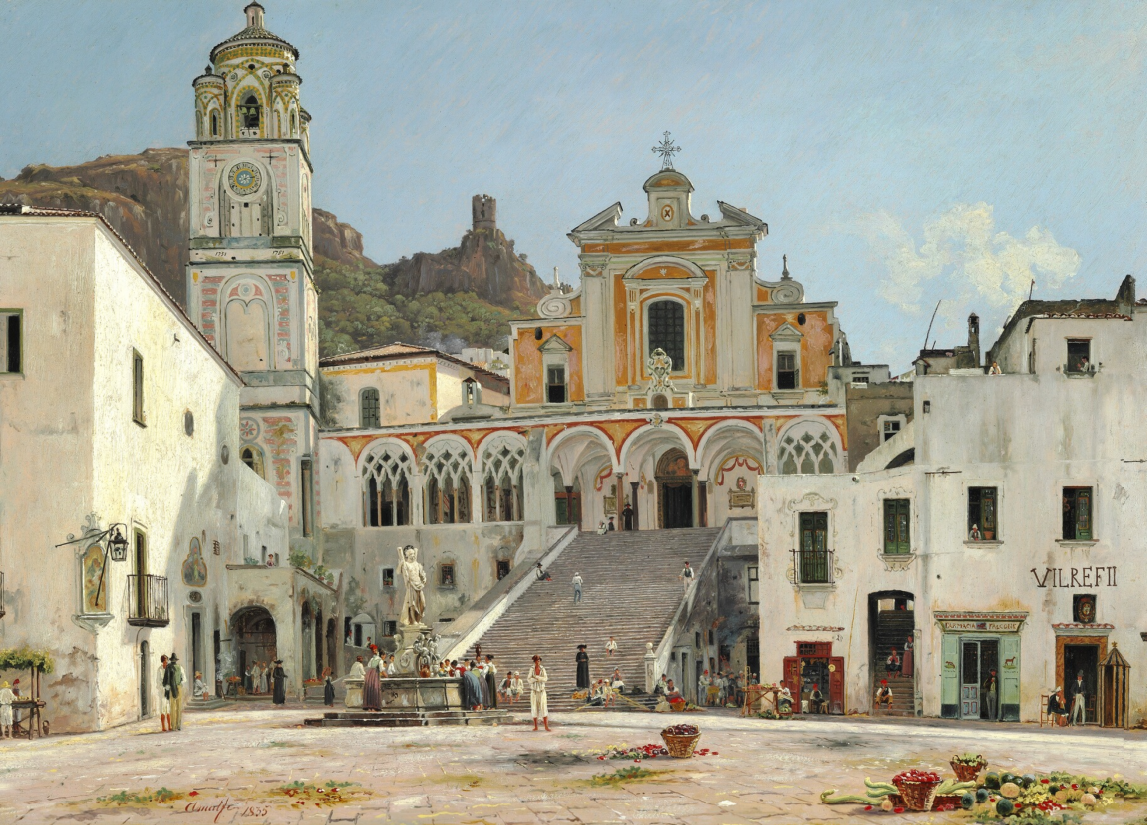The painting depicts the public square in front of Amalfi’s cathedral, San Andrea, with the 13th-century bell tower on the left and the surrounding houses and shops. The building volumes push up towards the square juxtaposed with the combined baroque and medieval architecture of the cathedral. The architectural elements pull together around the imposing stairs leading up to the cathedral entrance.
Complex images
Parti af torvet i Amalfi is striking for several reasons. The painting masterfully brings together and represents the complex architecture and also reflects Rørbye’s nearly ethnographic interest in local life by incorporating a wealth of details and scenes from the daily life that unfolds on the city’s main square.
Rørbye observes his surroundings and combines the monumental with the mundane. Architecture and daily life fall into place, demonstrating Rørbye’s ability to manage complex compositions. The painting stands out due to the intense green and reddish accents that frame the shops and the bright, colourful flowers and fruit in the foreground, seemingly remnants from the day’s market. Historically, Parti af torvet i Amalfi has been labelled a study, but Rørbye perceived it as a finished painting, and after his return from Italy he exhibited the piece at Charlottenborg alongside several other so-called studies from his sojourn.
Learning from Eckersberg
Rørbye was one of Eckersberg’s students. Eckersberg took great interest in Rørbye and expected great things from him. With regards to the complex interaction between figure and space, Rørbye actually surpasses his master. Rørbye boldly takes on complicated depictions of large figure compositions with multiple narratives, something that Eckersberg typically eschewed.
The painting was created in 1835 and is described in detail in the artist’s travel journal. The journal describes the difficulties Rørbye faced in finding a calm space to work, surrounded as he was by the hectic life on the public square. He even hired a local boy to keep the gawkers at bay. His efforts appear to have been successful. In the painting the many people are well distributed within the square, and Rørbye even added life behind the barred windows in the county gaol to the left of the wide stairs.
About Martinus Rørbye
Martinus Rørbye (1803–48) was born in Norway but came to Denmark with his family and studied at the Royal Danish Academy of Fine Arts in Copenhagen under C. W. Eckersberg. Rørbye was one of the most widely travelled painters of the Golden Age of Danish art, and his oeuvre includes images from Italy, Greece and Constantinople. From 1844 until his death he was a professor at the Academy.
The painting is included in the large exhibition about Danish Golden Age art that SMK is organizing in 2019 in collaboration with Nationalmuseum in Stockholm and Le Petit Palais in Paris.




